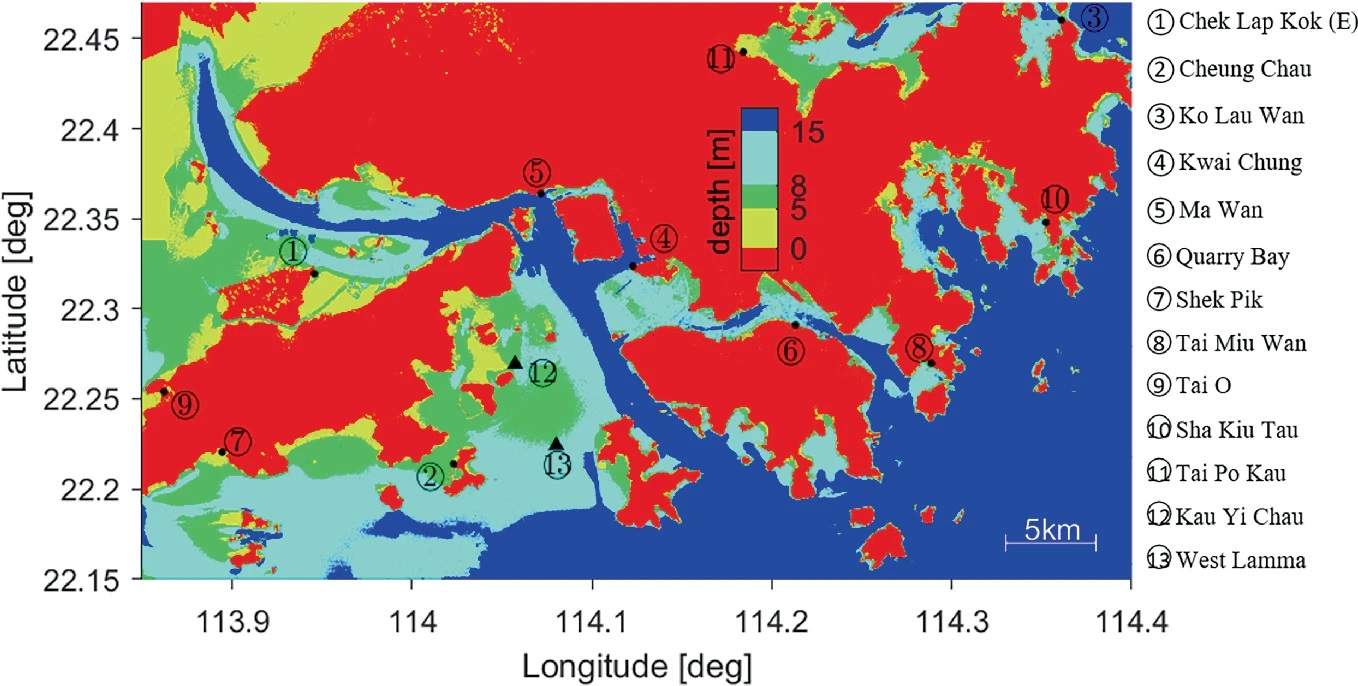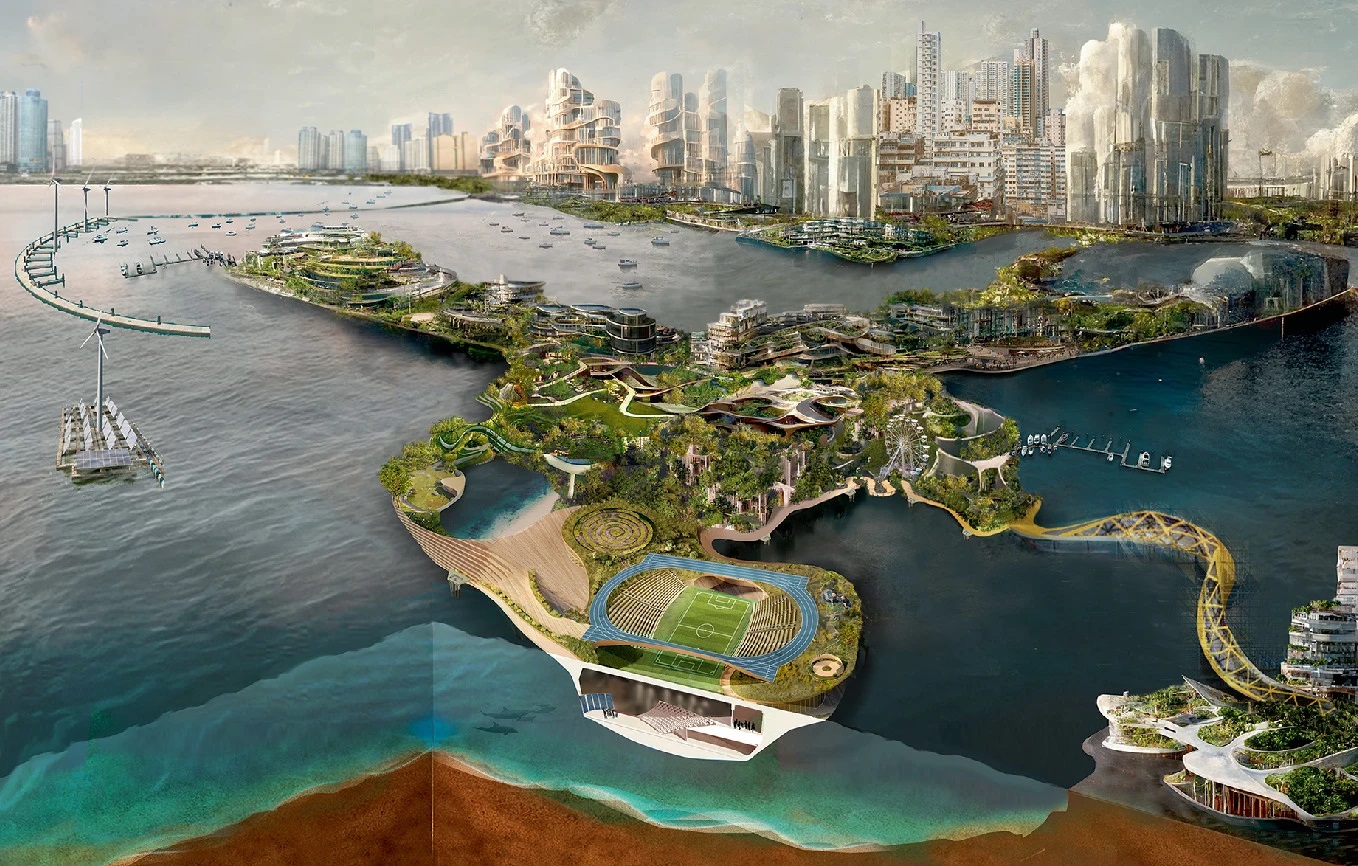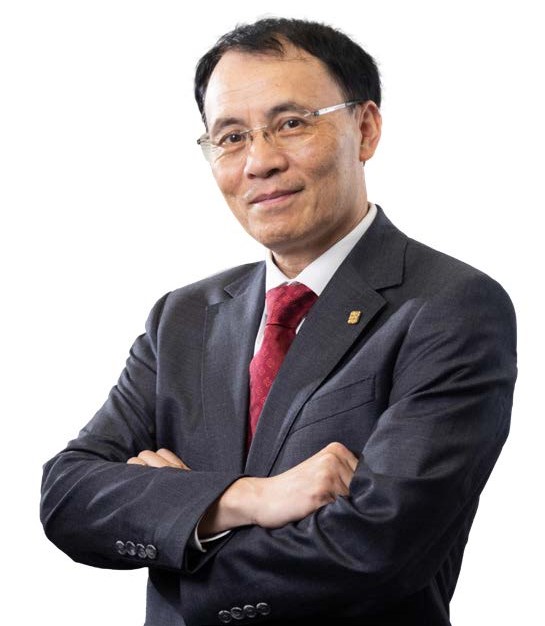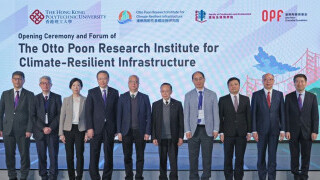Let the City Float: A Sustainable and Smart Floating Structure Solution for Hong Kong’s Scarce Lands
Other Articles

A Hybrid Floating Solution for Resilient, Adaptable and Sustainable Urban Development
Study conducted by Prof. Xiao Lin ZHAO and his research team

As the world’s coastal cities grapple with the dual challenges of climate change and rapid urbanisation, the concept of floating structures is gaining increasing attention. Floating structures—engineered platforms that rest on water bodies and support a variety of uses from housing to recreation—are no longer just futuristic visions. They are emerging as practical solutions to some of the most pressing urban challenges of our time, including rising sea levels, land scarcity and the need for climate-resilient infrastructure.
Globally, floating structures have been deployed in diverse contexts from floating runways in Japan and performance stages in Singapore, to residential communities in the Netherlands and floating offices in Rotterdam. These projects demonstrate the versatility and adaptability of floating platforms, especially in regions where traditional land reclamation is either too costly, environmentally damaging or simply unfeasible.
As a city renowned for its dense urban fabric and limited land supply, Hong Kong is at the forefront of this trend. With a projected land shortage of approximately 3,000 hectares over the next 30 years and a coastline vulnerable to the impacts of rising sea level due to climate change, the City faces mounting pressure to find innovative ways to expand its habitable space. Traditional land reclamation, while historically significant, is increasingly criticised for its environmental impacts—disrupting marine ecosystems, degrading water quality and requiring vast quantities of fill material. Moreover, the need for recreational and community spaces, which typically cannot be accommodated in high-rise developments, further complicates the City’s spatial planning.
Against this backdrop, floating structures offer a compelling alternative. They can be deployed in suitable water depths around Hong Kong (Figure 1), providing flexible, modular and environmentally sensitive solutions for a range of urban needs. By relocating leisure, cultural and even some residential functions onto water, valuable land can be reserved for high-density housing and essential infrastructure, optimising land use and enhancing overall liveability.

Figure 1. Map showing the water depths in Hong Kong water. Areas in cyan and blue are suitable water depth for building floating structures
At the heart of Hong Kong’s exploration into floating urbanism is the Sustainable and Smart Floating Structure Solution (S²FS²), a visionary approach championed by Prof. Xiao Lin ZHAO, Chair Professor of the Department of Civil and Environmental Engineering and Associate Director of the Research Institute for Land and Space at The Hong Kong Polytechnic University (PolyU), and his research team at PolyU, in collaboration with Prof. CM Wang and Dr. B Wang at The University of Queensland in Australia, and Dr. R. de Graaf-van Dinther at Blue21 in the Netherlands. The project vision was presented at the Third World Conference on Floating Solutions (WCFS 2023) and the conference paper published in WCFS 2023 Lecture Notes in Civil Engineering [1]. S²FS² proposes a hybrid model that combines conventional land reclamation with advanced floating platforms, creating new urban spaces that are both adaptive and resilient.
The S²FS² concept envisions large-scale floating platforms, constructed from durable, lightweight and eco-friendly materials, supporting a variety of superstructures for recreation, community facilities and even housing. Unlike traditional land reclamation, S²FS² offers several distinct advantages: significantly shorter construction times, reduced environmental impact, flexibility in configuration and relocation, immunity to seismic activity, and resilience against flooding and sea level rise.

Figure 2. The S²FS² concept: a hybrid solution combining floating structures with conventional land reclamation, featured by low-rise recreational, public and green functions on floating platforms on the foreground, and high-rise buildings on reclaimed land on the background
This hybrid approach is particularly well-suited to Hong Kong’s unique circumstances. For instance, the internal spaces of floating pontoons can be utilised for parking, storage or industrial activities, maximising the utility of every square metre. Floating structures can also serve as temporary disaster relief facilities, quarantine centres or emergency shelters, and can be relocated as needs evolve. Most importantly, by shifting non-essential functions onto water, S²FS² frees up precious land for high-rise residential development, directly addressing the City’s acute housing crisis (Figure 2).
Despite its promise, the implementation of S²FS² is not without significant challenges. Hong Kong’s harsh marine environment demands construction materials that are strong, watertight and highly resistant to corrosion and fatigue. Traditional materials like steel-reinforced concrete are prone to deterioration, necessitating the development of new composites such as fibre-reinforced polymers and ultra-high-performance concrete.
Structurally, the modular nature of S²FS² requires innovative connector systems that can withstand dynamic loads from waves, wind and typhoons, while ensuring ease of assembly and long-term durability. When it comes to the shape of floating modules, although squares and pentagons are commonly adopted, 3D printing technology offers an opportunity for any shapes.
Construction logistics present another layer of complexity. Floating modules, often exceeding 50 metres in size, must be fabricated, transported and assembled with precision—often in challenging sea conditions. Automated construction technologies, drone-based photogrammetry and Building Information Modelling are essential tools for achieving the required accuracy and efficiency.
Stability and safety are paramount, especially in the face of extreme weather events. Floating breakwaters, both bottom-founded and floating, are critical for protecting assets from wave forces while minimising ecological disruption. Recent innovations include multi-use breakwaters that integrate renewable energy generation and green infrastructure.
Sustainability, including both environmental and social aspects, remains a central concern. The ecological impacts of large-scale floating developments—such as changes in water quality, light and noise pollution—must be carefully monitored and mitigated. At the same time, floating structures offer opportunities for green aquaculture, renewable energy integration and climate-resilient urbanism. Social acceptance, legal frameworks and governance models will play decisive roles in the successful adoption of floating communities.
From an economic perspective, S²FS² also shows promise. A preliminary cost analysis for the proposed Kau Yi Chau artificial island project suggests that a hybrid approach—combining 75% land reclamation with 25% floating structures—could yield cost savings of up to 16.5%, amounting to HK$27 billion for a 1,000-hectare development. These savings, coupled with the flexibility and resilience of floating solutions, make S²FS² an attractive proposition for policymakers and investors alike.
In conclusion, the Sustainable and Smart Floating Structure Solution represents a bold and innovative response to Hong Kong’s urban challenges. By harnessing cutting-edge materials, modular construction and adaptive design, S²FS² offers a pathway to sustainable, resilient and liveable urban growth in the face of climate uncertainty and land scarcity. As floating solutions move from concept to reality, Hong Kong’s experience may well serve as a blueprint for other cities navigating the challenges of the 21st century.
The momentum behind floating solutions in Hong Kong is further underscored by the recent success of the 4th International Conference on Floating Solutions (WCFS 2024) chaired by Prof. Zhao. With the theme "Floating solutions for sustainable ocean development and blue economy", WCFS 2024 highlighted the strategic significance of developing sustainable floating structure technology—not only for Hong Kong but for coastal megacities worldwide facing the dual threats of sea level rise and overpopulation.
Prof. Zhao has been recognised by Stanford University as one of the top 2% of most-cited scientists worldwide (career-long) in the field of civil engineering for six consecutive years, from 2019 to 2024, and one of the top 2% of most-cited scientists worldwide (single-year) for six consecutive years, from 2019 to 2024. Prof. Zhao is a Fellow of the Australian Academy of Technological Sciences and Engineering and a Fellow of the Hong Kong Academy of Engineering. He was also a recipient of the Humboldt Research Award and the International Institute of Welding Thomas Medal.
| References |
|---|
[1] Zhao, X.L., Dai, J., Ding, X., de Graaf-van Dinther, R., Wang, C.M., Wang, B. (2024). Developing a Sustainable and Smart Floating Structure Solution for Enhancing Liveability in Hong Kong’s Crowded Built Environment. In: Ikoma, T., Tabeta, S., Lim, S.H., Wang, C.M. (eds) Proceedings of the Third World Conference on Floating Solutions. WCFS 2023. Lecture Notes in Civil Engineering, vol 465. Springer, Singapore. https://doi.org/10.1007/978-981-97-0495-8_1
 | Prof. Xiao Lin ZHAO |




